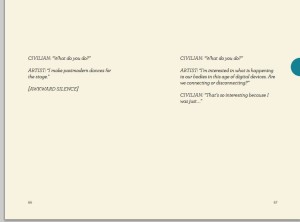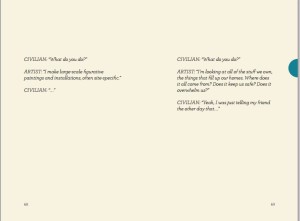Thomas Cott shared Colleen Dilenschneider’s recent post about the futility of using social media for the sake of using social media.
“…spending copious time on the newest social media features (that none of your audiences are using), measuring success by vanity metrics, and building out features that nobody is asking for…why do organizations do these things? They don’t help support bottom lines like getting folks in the door, building affinity, increasing donor support, or sharing knowledge if they aren’t relevant to your market or strategically integrated into an engagement plan…. and yet organizations brag about these useless endeavors to their boards and at industry conferences.
Many organizations seem to be feeling so “peer pressured” to be utilizing social media that they are using it to do stupid, time-consuming things for audiences that don’t matter”
I am right there with her. I have often suggested organizations shouldn’t be jumping on to the latest social media bandwagon. Especially since news of these apps/tools is often self-perpetuating out of proportion to the percentage of the population actually using them. Once a critical mass is reached, they get reported on because everyone else seems to be reporting on it making it seem like far more people are using it than actually are.
However, I can understand why arts organizations are doing it. Yesterday the Here and Now program on NPR interviewed Amanda Palmer and the conversation got around to referencing Taylor Swift’s story about two actresses being up for a part and the one with the larger Twitter following getting it.
While Palmer goes on to talk about a large following not equaling depth of engagement just as Dilenschneider mentions, the idea that breadth of exposure is better than depth with a few people is still the dominant criteria.
Print, broadcast and online media still talk about the number of eyes and ears they can deliver when trying to sell you advertising.
Grant reports will often ask about the number of hits your website received during the grant period. I called one funder to clarify criteria to use for indirect exposure because it almost felt like an invitation to wildly estimate using a contagion theory. My guess is that some of the sources of their funding have proved to be impressed by these numbers so we are being encouraged to provide them.
And actually, when I looked up contagion theory to make sure I was using the term correctly, I found out complex contagion theory is a term associated with social media. So it isn’t entirely unreasonable that funders are interested in reporting about a shotgun approach.
The same thinking that motivates a movie or stage production to cast the actor whose commentary on their involvement in the project will reach the most people, influences the values of arts organizations and their funders. If an organization is trying to expand its reach with using the hottest new toys, don’t they appear more ambitious and progressive than the organization that has a solid 500 people savoring their every post on a single social media site?
Visit the Facebook pages of two arts organizations in a city you have never visited. When you decide which is better are you basing it on how cool their header image is and the number of likes? Or did you actually take the time to evaluate the quality of their posts?
Colleen Dilenschneider is fairly accurate in her assessment about how these efforts will not provide any meaningful results, wastes time and potentially sets your efforts back. The answer to her question about why organizations engage in futile social media efforts is that the illusion of progress is valued.
To some extent, you might ask the same question about why people use alcohol as a social lubricant instead of working on changing themselves to become more adept at handling these situations. Except that the illusion generated by this activity is widely expected and accepted. (Insert your own joke equating the idea of wasted resources and the need to use the restroom after a beer.)











There is another way. The Gewandhaus Leipzig in Germany (concert venue) offers flex- tickets for a small premium. Not an…